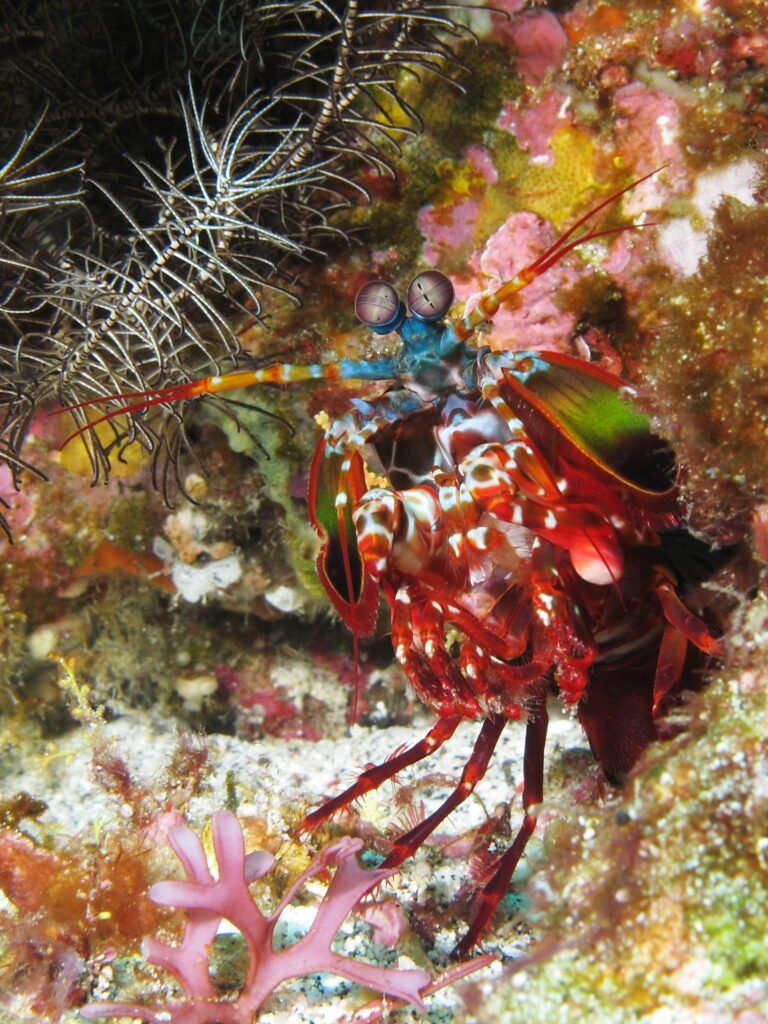Imagine a creature so powerful that its punch can shatter glass, cripple prey, and move so quickly it creates bubbles that flash with light and heat. This isn’t a monster from science fiction—it’s the mantis shrimp, a small marine animal with a reputation that sends shockwaves through the scientific world. While it may look unassuming at first glance, the mantis shrimp is a true marvel of evolution, wielding weapons and abilities that would put most superheroes to shame. Step into the astonishing world of the mantis shrimp, where science meets spectacle, and nature’s ingenuity is put on full display.
What Is a Mantis Shrimp?

The mantis shrimp is not actually a shrimp, but a stomatopod, belonging to a distinct order of crustaceans. Living in warm, shallow waters, these creatures are found across the world’s tropical and subtropical seas. Mantis shrimps are famous for their striking appearance—vividly colored bodies, fierce eyes, and a pair of raptorial appendages that look more like weapons than limbs. Despite their small size, typically ranging from 2 to 7 inches, they dominate their environment with their sheer power and speed. These animals have fascinated scientists for decades, not only because of their weaponry but also their unique sensory abilities.
The Legendary “Bullet Punch”
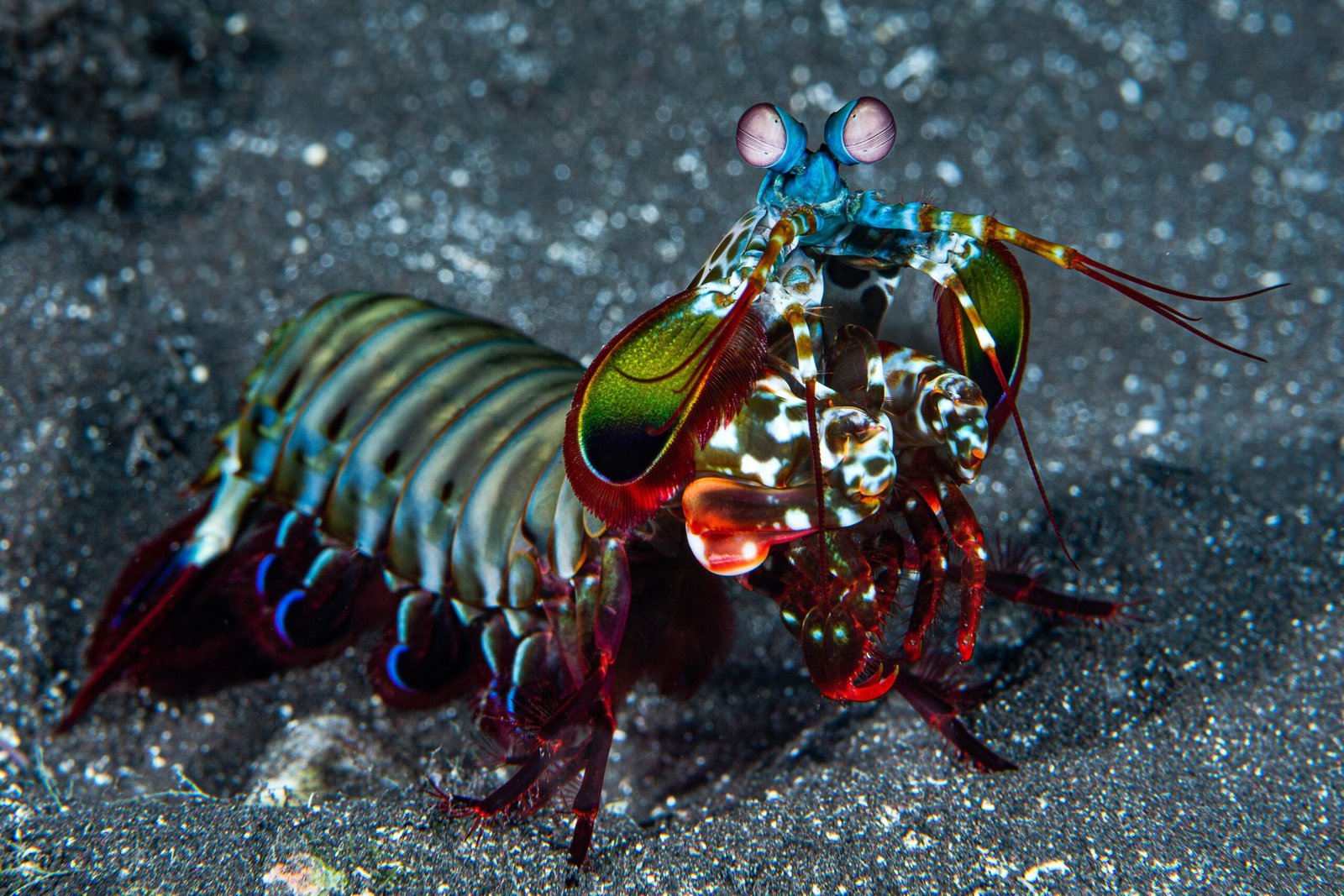
One of the most astonishing features of the mantis shrimp is its ability to deliver a punch with the speed of a bullet. The appendages, often called “clubs,” accelerate underwater faster than a .22-caliber bullet—reaching speeds of up to 50 miles per hour in less than 3 milliseconds. This incredible force is enough to break aquarium glass and crack open the hard shells of crabs and mollusks. When the club strikes, it generates a shockwave that adds to the damage, making it one of the most effective hunting tools in the animal kingdom. The impact is so powerful that it momentarily heats the water, creating a phenomenon known as cavitation, where bubbles collapse with a flash of light and heat.
How the Punch Works: The Science Behind the Strike
The mantis shrimp’s punching power comes from a specialized structure in its arm called a saddle-shaped spring. This mechanical marvel stores energy like a loaded crossbow. When the mantis shrimp is ready to strike, it releases this energy all at once, launching its club forward in a rapid, explosive movement. The appendage is reinforced with layers of chitin and minerals, making it both strong and lightweight. Scientists have studied the microscopic structure of the club and found it to be tougher than many engineered materials, inspiring new types of armor and body protection. The precision and repeatability of the punch are nothing short of breathtaking, making the mantis shrimp a living example of physics in action.
Types of Mantis Shrimps: Smashers and Spearers
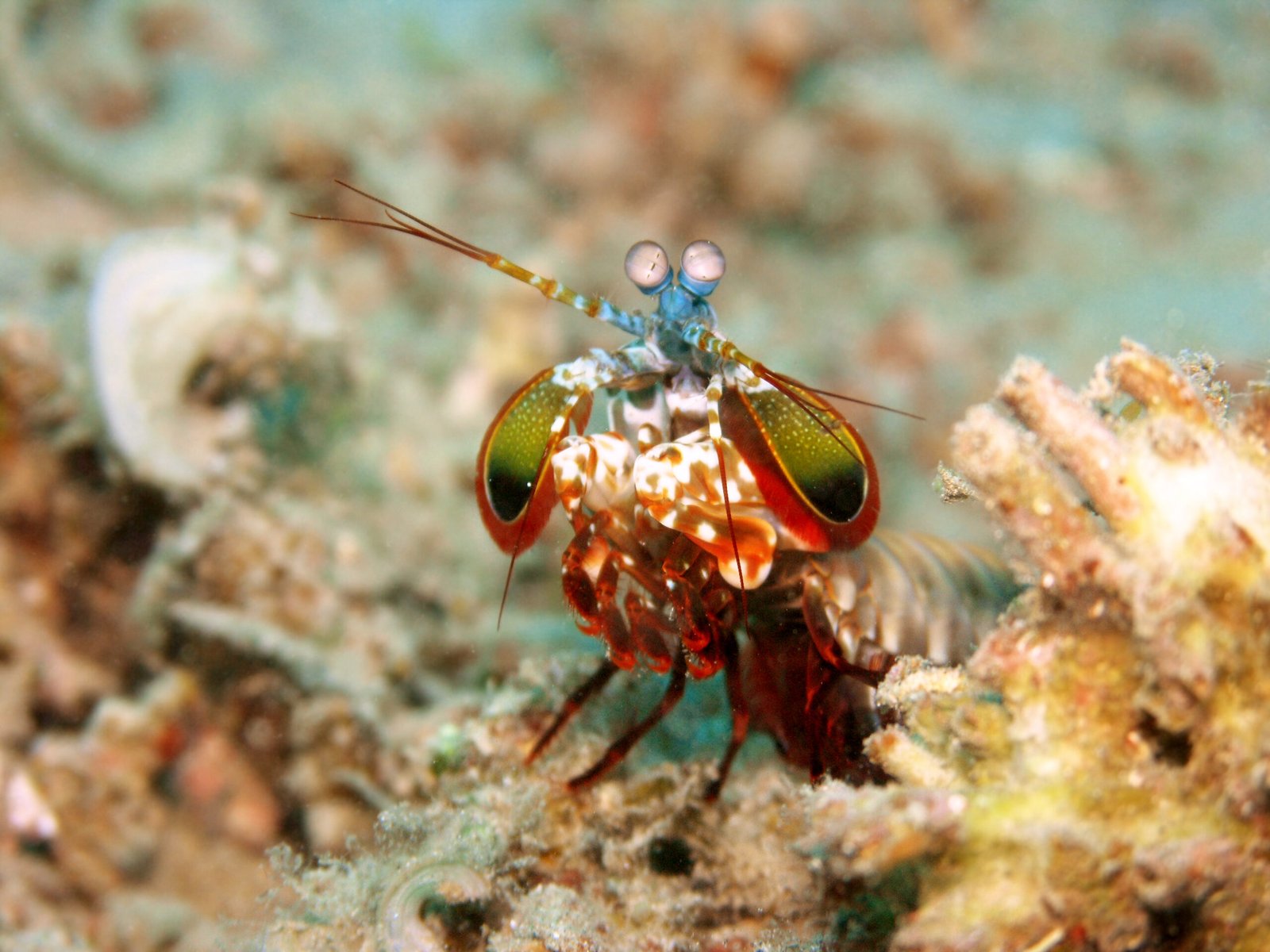
Mantis shrimps come in two main types: smashers and spearers. Smashers wield club-like appendages to deliver devastating blows, perfect for breaking shells and stunning prey. Spearers, on the other hand, have sharp, barbed limbs designed to impale soft-bodied animals like fish. Each type has evolved to exploit different ecological niches, resulting in diverse hunting strategies and behaviors. Smashers are often seen targeting armored prey, while spearers wait in ambush, striking with lightning speed. This division showcases the adaptability of mantis shrimps and their evolutionary success in various marine environments.
Vision Beyond Imagination

If you thought the mantis shrimp’s punch was impressive, wait until you hear about its eyes. Mantis shrimps possess some of the most complex eyes in the animal kingdom, capable of detecting polarized light and twelve color channels—compared to just three in humans. This means they can see a world of colors invisible to us, including ultraviolet and infrared. Their eyes are mounted on stalks and move independently, giving them an almost panoramic view of their surroundings. This extraordinary vision helps them spot prey, rivals, and mates with incredible accuracy. Scientists believe their visual prowess may also play a role in communication, as some mantis shrimps display intricate color patterns to each other.
Anatomy of an Underwater Warrior
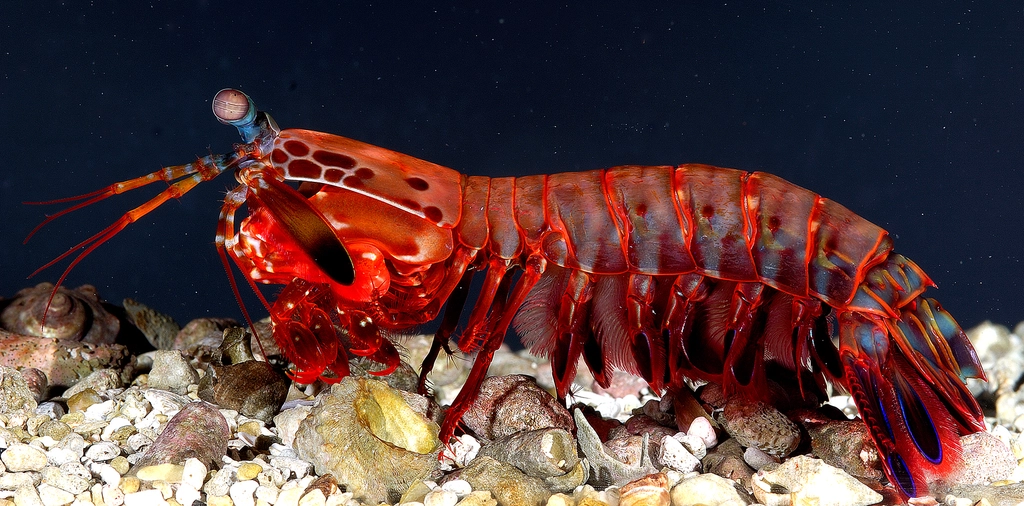
The mantis shrimp’s body is a masterpiece of evolutionary engineering. Its carapace is streamlined and tough, allowing it to wedge into tight spaces and avoid predators. Its limbs are designed for digging, swimming, and, of course, striking. The muscular system is highly developed, providing the strength needed for rapid acceleration. Inside, the nervous system is built for lightning-fast response times, allowing the mantis shrimp to react instantly to threats or opportunities. Every part of its anatomy is shaped by the dual needs of survival and predation, making it one of the most efficient hunters in the ocean.
Communication and Social Behavior

Mantis shrimps are far from simple brutes. They engage in complex social behaviors, including ritualized fighting, courtship dances, and even forming monogamous pairs in some species. They use visual signals, body postures, and chemical cues to communicate with each other. In territorial disputes, mantis shrimps may spar with rivals, using threats and displays before resorting to violence. Some species even share burrows and raise offspring together, demonstrating cooperation rarely seen among crustaceans. These behaviors reveal a surprising depth of intelligence and adaptability.
Survival Tactics and Predators
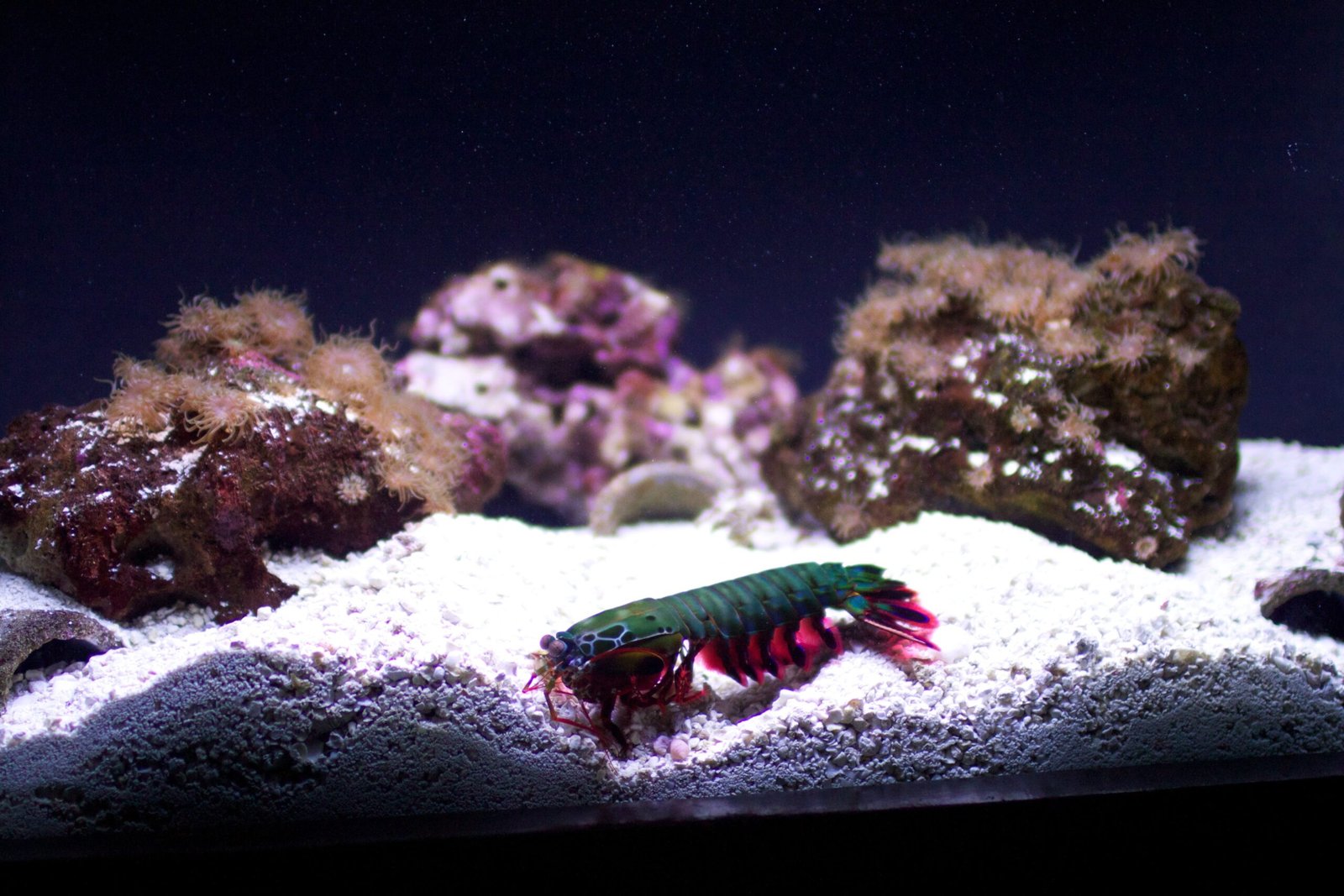
Despite their formidable weapons, mantis shrimps are not invincible. They face threats from larger predators such as octopuses, fish, and humans. To survive, they rely on speed, agility, and their extraordinary vision to avoid danger. Many species dig intricate burrows in coral reefs or sandy bottoms, creating safe havens where they can rest or ambush prey. When threatened, a mantis shrimp can retreat into its burrow and block the entrance with debris, effectively barricading itself from attackers. These tactics, combined with their fierce reputation, make them challenging prey for even the most determined hunters.
The Role in Marine Ecosystems
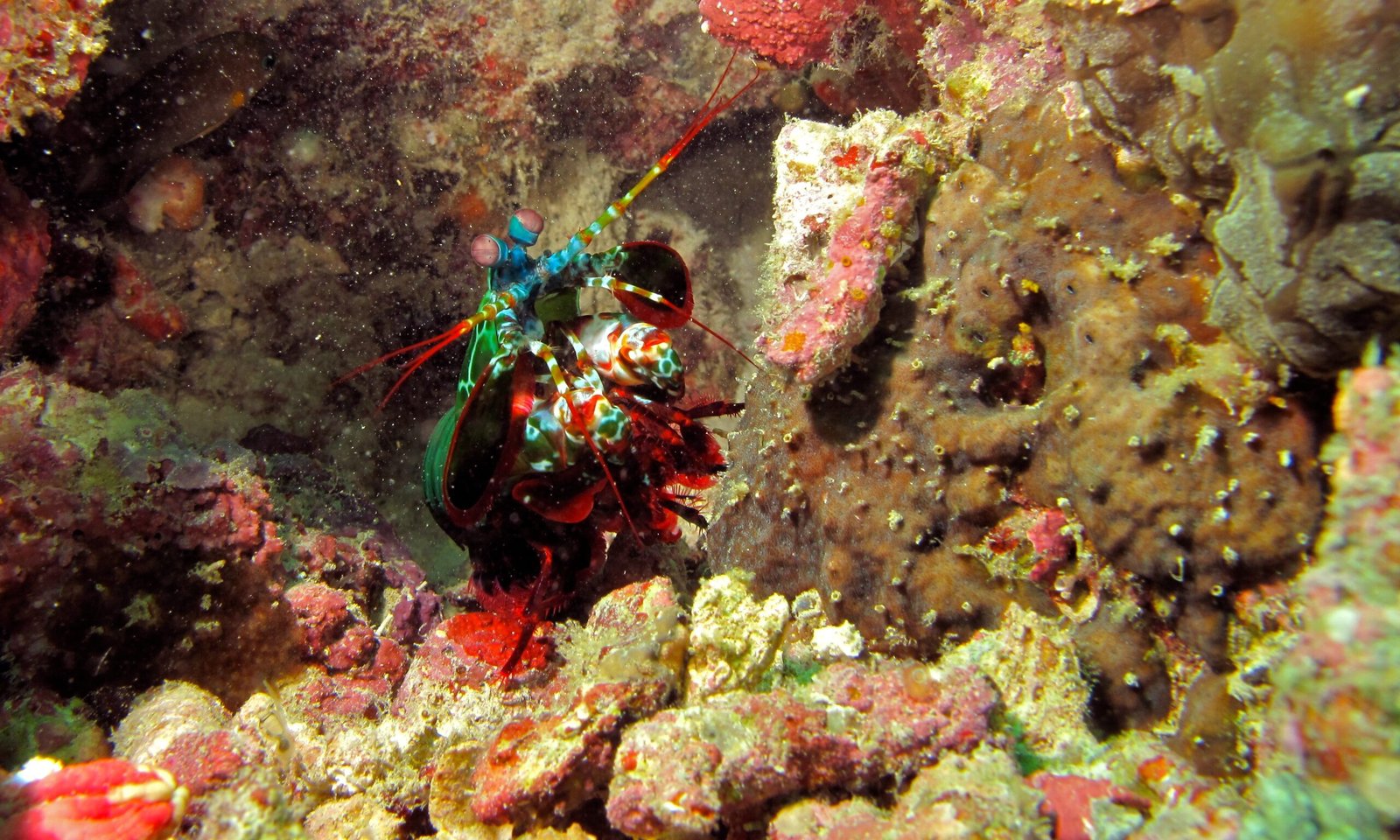
Mantis shrimps play a crucial role in maintaining the health and balance of marine ecosystems. As top predators in their microhabitats, they help control populations of smaller crustaceans, mollusks, and fish. Their burrowing activities aerate the seafloor, which can benefit other marine organisms by improving water flow and nutrient cycling. By preying on weak or sick animals, mantis shrimps also contribute to the overall health of the ecosystem. Their presence is a sign of a thriving reef or seafloor community, making them important indicators of environmental well-being.
Inspiration for Human Technology
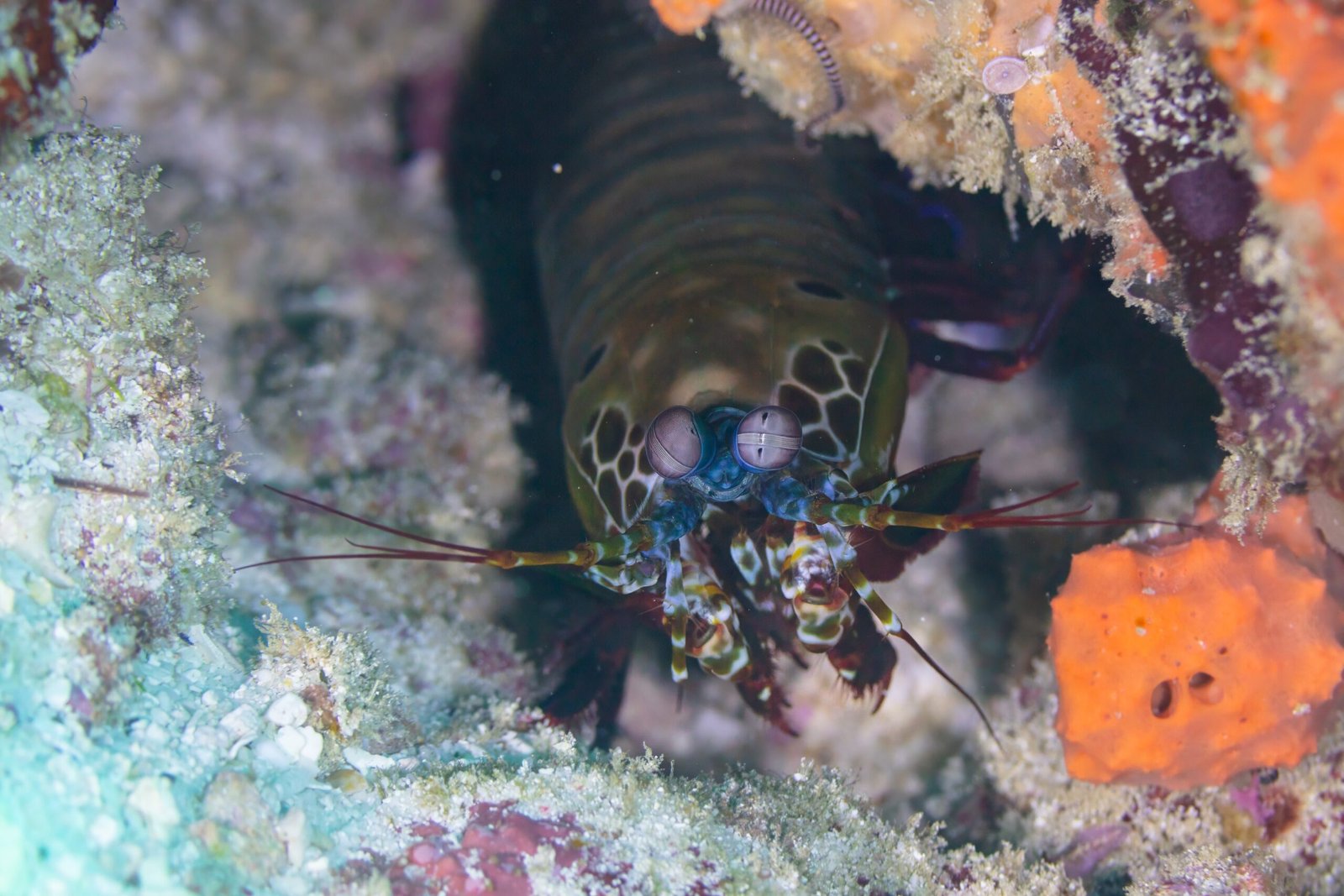
The mantis shrimp’s unique biology has captured the imagination of engineers and materials scientists around the world. The structure of its club has inspired the development of new, impact-resistant materials for use in armor, sports equipment, and aerospace engineering. The shrimp’s vision system has led researchers to explore new camera technologies that could revolutionize imaging in medicine, robotics, and security. By studying the mantis shrimp, scientists hope to unlock secrets that could change the way we build, see, and protect ourselves.
Fascination in Popular Culture

Over the years, the mantis shrimp has become something of a celebrity in popular culture. Its astonishing abilities are frequently featured in documentaries, science magazines, and viral internet posts. Artists and writers have drawn inspiration from its vibrant colors and superhuman strength, turning it into a symbol of nature’s hidden wonders. Even in the world of video games and comics, the mantis shrimp’s “bullet punch” has become legendary. This fascination reflects our deep curiosity about the natural world and our endless search for inspiration in the most unexpected places.
Unanswered Questions and Ongoing Research
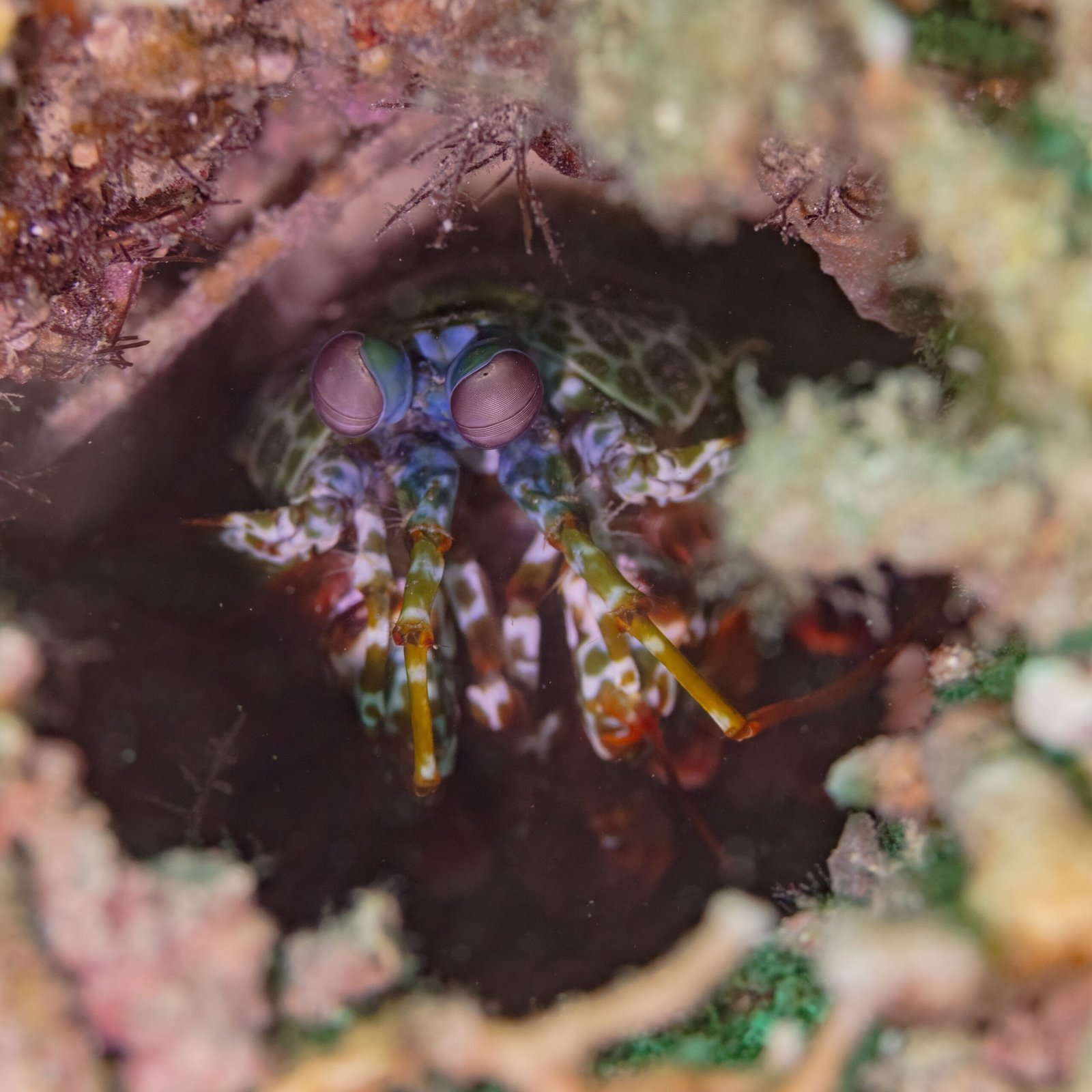
Despite all we’ve learned, there is still much to uncover about the mantis shrimp. Scientists continue to study its genetics, behavior, and evolutionary history, searching for clues about how such a remarkable creature came to be. Questions remain about the full extent of its vision, the mechanics of its punch, and the potential applications of its unique adaptations. Every new discovery adds another layer to the story, reminding us that nature is full of surprises waiting to be revealed.
The mantis shrimp stands as a powerful reminder of nature’s ingenuity and the wonders that still lurk beneath the surface of our oceans. Its strength, speed, and sensory skills are nothing short of astonishing, challenging everything we thought we knew about what a small creature can achieve. Who would have guessed that something so small could pack such a mighty punch?

